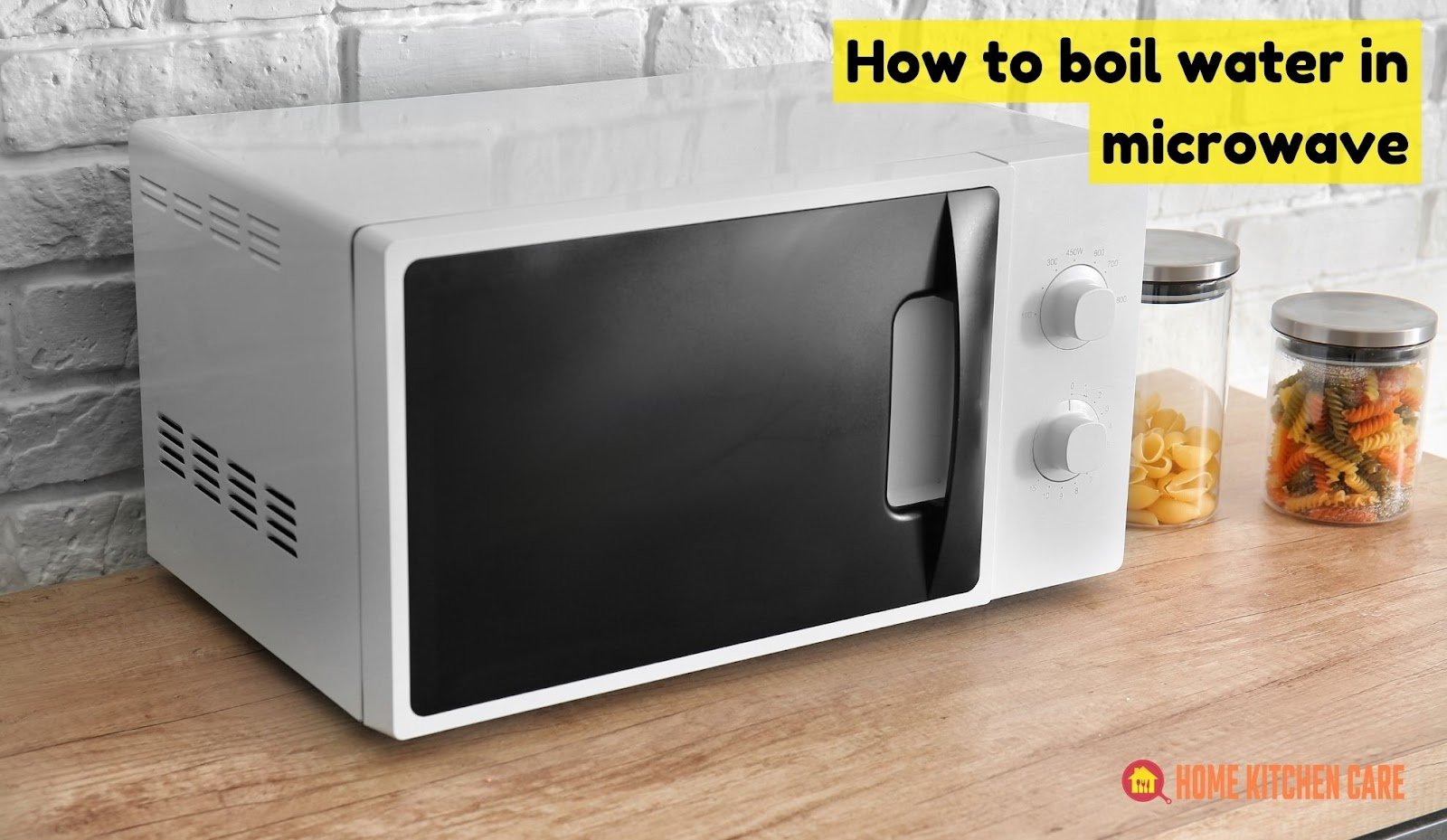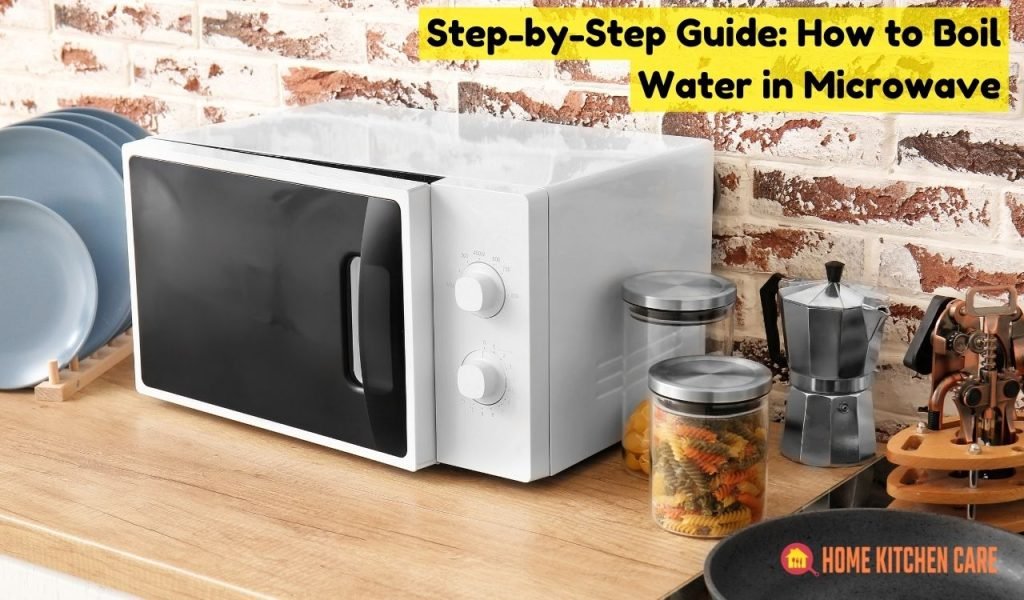Physical Address
304 North Cardinal St.
Dorchester Center, MA 02124
Physical Address
304 North Cardinal St.
Dorchester Center, MA 02124

Are you wondering how to boil water in microwave? Look no further! In this short and sweet guide, we’ll walk you through the simple steps to master the art of boiling water using your trusty microwave. Say goodbye to waiting for a kettle to boil or dealing with messy stovetop pots.
With our foolproof method, boiling water in the microwave is a breeze. So grab your favorite mug and let’s dive into the world of microwaved perfection. Get ready to embrace the convenience and speed of boiling water with just a touch of a button. Let’s get started on your journey to becoming a microwave water boiling pro!
Main Summary: How to Boil Water in Microwave?
Boiling water in a microwave is simple. Fill a microwave-safe container with water, place a non-metallic object inside to prevent superheating, and heat in short bursts, stirring occasionally, until it reaches a rolling boil. Remember to handle the hot container with caution.
When it comes to boiling water in the microwave, it’s crucial to prioritize safety to avoid any potential hazards. By following these safety precautions, you can confidently and securely use your microwave for this purpose:

Always choose microwave-safe containers specifically designed to withstand high temperatures. Look for containers labeled as “microwave-safe” or those made of glass, ceramic, or microwave-safe plastic.
These materials are less likely to warp, melt, or release harmful substances when exposed to heat.
Never use tightly sealed containers when boiling water in the microwave. The pressure buildup inside the container can lead to explosions, causing serious harm.
Instead, leave the container slightly open or use a microwave-safe cover that allows steam to escape. This release of steam prevents excess pressure from building up and reduces the risk of accidents.
Hot water can cause severe burns. When removing the container from the microwave, always use oven mitts or pot holders to protect your hands from the heat. Take extra care when handling the container, as it may be hotter than expected due to the microwave’s heating process.
Superheating occurs when water surpasses its boiling point without forming visible bubbles. This can lead to sudden eruptions and splattering when disturbed, posing a significant risk of burns.
To avoid superheating, always use a microwave-safe stirring device, such as a wooden or plastic stir stick, when boiling water. The act of stirring creates nucleation sites, encouraging the formation of bubbles and preventing superheating.
Ensure the container you use for boiling water in the microwave has enough capacity to accommodate the desired amount of water. It’s crucial to leave sufficient headspace to prevent overflow during the boiling process.
Overfilling the container may lead to hot water spilling out, causing burns or damage to the microwave.
While the microwave is heating the water, it’s essential to keep a close eye on the process. Never leave the microwave unattended during this time. Monitoring allows you to intervene if the water starts to boil rapidly or if any unexpected issues arise.
After boiling water in the microwave, let the container sit for a moment before further handling or transferring the water. This brief period allows the water to stabilize and reduces the risk of sudden splashing or spilling.
Additionally, it gives you a chance to assess the temperature before using the hot water.

Boiling water in the microwave is a convenient and time-saving method. Follow this step-by-step guide to ensure a successful and efficient boiling process:
Select a microwave-safe container that can withstand high temperatures. Opt for glass, ceramic, or microwave-safe plastic containers labeled specifically for microwave use. Avoid using metal or containers with metallic accents, as they can cause sparks or damage to the microwave.
Pour the desired amount of water into the chosen container. It’s important to add enough water to fulfill your needs while leaving sufficient headspace to prevent overflow when boiling. Remember that water expands as it heats, so be mindful of the container’s capacity.
To prevent superheating, grab a heat-resistant stirring device, such as a wooden or plastic stir stick or wooden bowls, and gently stir the water.
This creates nucleation sites, facilitating the formation of bubbles and reducing the risk of sudden eruptions. Avoid using metal utensils, as they can cause sparks and damage the microwave.
Place a microwave-safe cover or microwave-safe plastic wrap loosely over the container. This allows steam to escape and prevents excessive pressure buildup. Avoid using airtight or tightly sealed covers, as they can lead to dangerous situations due to pressure buildup.
Set the time on your microwave according to the desired boiling duration. Keep in mind that the actual time required may vary based on your microwave’s power and the amount of water being heated. As a general guideline, start with a shorter duration and gradually increase if necessary.
Place the container in the microwave and start the heating process. Keep a watchful eye on the water as it begins to heat. Avoid leaving the microwave unattended, especially during the initial stages of boiling.
Periodically check the microwave during the boiling process. If you notice the water rapidly approaching a boiling point or excessive bubbling, pause the microwave and allow the water to settle for a few seconds. This helps prevent sudden eruptions and potential spills when handling the hot container.
Once the water has reached the desired boiling point, exercise caution when removing the container from the microwave. Use oven mitts or pot holders to protect your hands from the heat. Remember that the container and its contents will be hot, so handle it with care.
After removing the container from the microwave, allow the water to settle for a brief moment. This helps stabilize the temperature and reduces the risk of accidental spills or splashing. Take this time to assess the temperature and ensure it suits your needs.
Once the water has settled, you can utilize it for your intended purpose. Whether it’s for cooking, making hot beverages, or any other application, ensure that you handle the hot water safely and avoid contact with your skin to prevent burns.
Boiling water in the microwave can be a simple and efficient way to accomplish various tasks in the kitchen. To optimize the process and ensure the best results, consider the following tips and tricks:
Boiling water in the microwave is a convenient and time-saving method for various purposes, such as making hot beverages or preparing instant meals.
By following the safety precautions and step-by-step guide outlined in this article, you can confidently and efficiently boil water using your microwave.
Remember to exercise caution, prioritize safety, and enjoy the convenience this technique offers in your everyday life. Cheers to easily boiling water in your microwave!
It typically takes about 2-3 minutes to boil water in the microwave. However, the exact time may vary depending on the wattage of your microwave and the amount of water you are boiling.
Yes, you can boil water in a microwave-safe plastic container. Look for containers labeled as microwave-safe and ensure they are free from any metal parts or non-microwave-safe symbols.
Yes, it is generally safe to microwave water in a ceramic mug. Just make sure the mug is microwave-safe and does not have any metallic accents or glazes that could cause sparks or damage to the microwave.
It is recommended to use the high power setting on your microwave to boil water quickly. Most microwaves have a default high power setting, but you can also refer to your microwave’s user manual for specific instructions.
To prevent water from boiling over in the microwave, you can place a microwave-safe utensil, such as a wooden spoon or a microwave-safe plate, in the container. This will create nucleation sites and help to control the boiling process.
Yes, you can add salt to water when boiling it in the microwave. However, be cautious and only add a small amount, as adding too much salt may cause the water to boil more violently and increase the risk of it splattering.
Water can sometimes explode in the microwave if it is heated for too long or if it is superheated, which means it has been heated beyond its boiling point without any visible signs of boiling. To avoid this, you can place a non-metallic object, like a wooden stir stick, in the water to prevent superheating.
Yes, you can use a microwave to boil distilled water. The process of boiling distilled water in a microwave is similar to boiling regular water. However, keep in mind that even distilled water can become superheated, so it’s important to handle it with caution.
Covering the container when boiling water in the microwave is not necessary, but it can help to prevent splattering and retain heat. If you choose to cover the container, make sure to use a microwave-safe cover or leave a small vent for steam to escape.
Yes, you can reheat boiled water in the microwave. Ensure the water is in a microwave-safe container and heat it for a shorter duration than the initial boiling time. It’s recommended to stir the water after reheating to distribute the heat evenly.